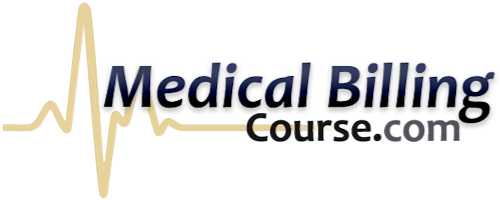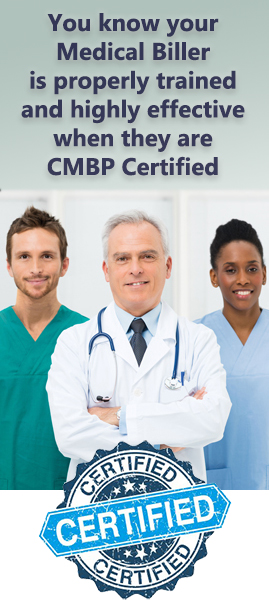- 09/17/2025
- Posted by: Medical Billing Course
- Category: Medical Billing Course

Mastering the Fundamentals of Medical Billing for Success: Essential Skills and Career Pathways
Medical billing is the heartbeat of healthcare transactions, transforming clinical services into precise claims that fuel provider revenue and patient care. While the world of medical billing can seem daunting with its intricate codes, strict regulations, and ever-evolving technology, mastering these essentials can open doors to certification, a successful home-based business, or career advancement within a healthcare organization. This guide provides a comprehensive roadmap to the Fundamentals of Medical Billing:
- Core Concepts & Importance – Definitions, key players, terminology, and impact on revenue cycle management
- Coding Systems – How CPT, ICD-10, HCPCS Level II codes, and modifiers ensure precise billing
- Billing Processes – From patient registration to collections, step by step
- Regulatory Compliance & Ethics – HIPAA, fraud prevention, professional standards, and CMS rules
- Career & Business Building – Certification pathways, salary outlook, entrepreneurship, software mastery, and continuing education
- Emerging Trends – Telehealth billing, AI automation, coding updates, and data security
Whether you’re considering a new career or looking to expand your medical billing practice, you’ll find actionable insights and strategic guidance rooted in industry best practices and the comprehensive training offered through our Learn Medical Billing Basics program. Understanding the Fundamentals of Medical Billing is the first step to success.
Meet Our Expert: Tri Smith
“The medical billing field is dynamic and crucial for the financial health of any healthcare provider. Mastering its intricacies not only ensures accurate reimbursement but also contributes to better patient care by keeping practices operational and efficient. Our program is designed to equip students with the practical skills and confidence needed to excel.” – Tri Smith, Instructor, MedicalBillingCourse.com
Tri Smith, a seasoned instructor at MedicalBillingCourse.com, brings over five years of dedicated experience to educating aspiring medical billing professionals. With a passion for demystifying complex billing processes, Tri has guided thousands of students toward successful course completion and certification. His expertise lies in breaking down essential concepts, providing real-world examples, and fostering a supportive learning environment that empowers students to confidently enter and thrive in the medical billing industry.
What Are the Core Concepts and Importance of Medical Billing?
Effective medical billing is the backbone of healthcare finance, ensuring providers receive payment for services rendered. It involves accurate data capture, claim preparation, and follow-up, directly influencing cash flow and operational viability. Below are its fundamental elements, crucial for grasping the Fundamentals of Medical Billing:
What Is Medical Billing and Why Is It Essential in Healthcare?
Medical billing is the process of translating healthcare services into standardized claims submitted to payers for reimbursement. It ensures providers are compensated, supports transparent patient statements, and fuels the revenue cycle management essential for practice sustainability and quality care delivery. This process is central to the Fundamentals of Medical Billing.
Who Are the Key Players in the Medical Billing Process?
Accurate billing depends on coordinated roles:
- Providers (Physicians, Clinics) submit service details.
- Patients supply demographic and insurance information.
- Payers (Insurance Companies) adjudicate and reimburse claims.
- Clearinghouses validate and forward claims to payers.
Smooth collaboration reduces denials and accelerates revenue, building a solid foundation for advanced training such as our foundational medical billing training program.
What Medical Terminology and Anatomy Basics Should Billers Know?
Billers require familiarity with:
- Anatomical Terms – Body systems and organ nomenclature
- Procedure Names – Surgical, diagnostic, therapeutic services
- Abbreviations – CPT, ICD, HCPCS, modifiers
Proficiency minimizes coding errors and claim rejections, directly improving reimbursement rates and claim turnaround. These are key components of the Fundamentals of Medical Billing.
How Does Medical Billing Impact Revenue Cycle Management?
Medical billing is the critical stage in revenue cycle management (RCM) that transforms clinical encounters into financial transactions. Efficient billing accelerates cash flow, lowers accounts receivable days, and ensures compliance, safeguarding both provider profitability and patient satisfaction. Understanding this connection paves the way for mastering detailed coding systems, a core aspect of the Fundamentals of Medical Billing.
Medical Billing and Revenue Cycle Management
Medical billing is a crucial component of revenue cycle management (RCM) in healthcare, directly impacting a provider’s financial stability. Efficient billing practices accelerate cash flow, reduce accounts receivable days, and ensure compliance with regulations, which are essential for both provider profitability and patient satisfaction.
– Healthcare Financial Management Association (HFMA), Revenue Cycle Management: A Practical Guide (2022)
This research supports the article’s emphasis on the importance of medical billing within the broader context of revenue cycle management.
How Do Medical Coding Systems Support Accurate Medical Billing?

Precise coding transforms clinical documentation into billable claims, reducing denials and audits. Coding standards serve as a universal language between providers and payers, directly affecting reimbursement accuracy. Mastering these systems is fundamental to the Fundamentals of Medical Billing.
What Are CPT Codes and How Are They Used in Billing Procedures?
CPT codes classify medical procedures and services, ensuring claims reflect the exact care delivered. These five-digit numeric codes standardize billing across payers, enabling consistent valuation and reimbursement of clinical activities.
How Do ICD-10 Codes Define Diagnoses for Billing Purposes?
ICD-10 codes categorize patient diagnoses, allowing payers to verify medical necessity. This alphanumeric system captures detailed disease information, linking clinical conditions to appropriate service codes and streamlining the claims adjudication process.
What Role Do HCPCS Level II Codes Play in Medical Billing?
HCPCS Level II codes cover supplies, durable medical equipment, prosthetics, and injectable drugs not included in CPT. They ensure items like wheelchairs or medications are billed correctly, preserving compliance with payer guidelines and enhancing revenue accuracy.
How Are Modifiers Applied to Enhance Billing Accuracy?
Modifiers adjust primary codes to indicate altered or multiple services without duplicating billing. For example, appending to a CPT code signifies a significant, separate evaluation and management service on the same day, preventing under- or over-reimbursement.
Comparative Table: Key Coding Systems (EAV Format)
The table below outlines each coding system’s primary attribute and its value in billing:
Each coding system interlocks with others to form a comprehensive claim, reinforcing the need for advanced training in advanced medical coding and billing.
What Are the Step-by-Step Processes in Medical Billing?
A systematic workflow turns patient encounters into payments. Understanding this flow is essential for minimizing errors and accelerating reimbursements, a key part of the Fundamentals of Medical Billing.
How Is Patient Registration and Insurance Verification Conducted?
Patient registration captures demographics, insurance details, and consent. Insurance verification confirms coverage, copays, and prior authorization requirements, preventing claim rejections at the outset.
What Is Charge Capture and How Are Superbills Used?
Charge capture records services rendered using superbills—itemized forms listing diagnoses and procedures. Accurate superbills feed into billing software for claim generation, ensuring full capture of billable services.
How Are Claims Submitted Electronically and on Paper?
Electronic claims use standard formats like ANSI X12 837, speeding transmission to clearinghouses. Paper claims follow CMS-1500 or UB-04 forms for situations lacking electronic connectivity. Electronic submission reduces errors and expedites processing.
What Happens During Claims Adjudication and Explanation of Benefits?
Adjudication is payer review of claim accuracy, eligibility, and coverage, resulting in approval or denial. The Explanation of Benefits (EOB) details payment amounts, patient responsibility, and denial reasons, guiding follow-up actions.
How Are Denials Managed and Appeals Processed?
Denial management involves analyzing reasons for claim rejection, correcting errors, and resubmitting. Appeals require documented clinical justification, supporting appeals letters, and timely submission within payer deadlines to recover revenue.
How Are Patient Statements and Collections Handled?
After adjudication, patient statements outline outstanding balances. Collections strategies include automated reminders, payment plans, and, when necessary, third-party agencies. Effective patient engagement maximizes final payment recovery and practice reputation.
Master Medical Billing Fundamentals for Career Success
Adhering to legal and ethical standards protects patient privacy, prevents fraud, and maintains professional integrity across billing activities. These are the critical Fundamentals of Medical Billing.
What Are the Key HIPAA Compliance Requirements for Medical Billers?
HIPAA mandates safeguards for Protected Health Information (PHI) in billing systems. Requirements include secure data transmission, access controls, and breach notification protocols to prevent unauthorized disclosure and penalties.
HIPAA Compliance in Medical Billing
HIPAA regulations mandate strict safeguards for Protected Health Information (PHI) within medical billing systems. These requirements include secure data transmission, access controls, and breach notification protocols to prevent unauthorized disclosure and potential penalties. Compliance is essential for maintaining patient trust and avoiding legal repercussions. To learn more about the importance of compliance, check our HIPAA course program.
– U.S. Department of Health & Human Services, HIPAA for Professionals (2024)
This citation reinforces the article’s discussion of HIPAA compliance as a critical aspect of ethical and legal medical billing practices.
How Can Medical Billers Prevent Fraud, Waste, and Abuse?
Billers must follow coding guidelines, avoid upcoding or unbundling services, and verify medical necessity. Internal audits, compliance training, and ethical reporting channels deter fraudulent practices and safeguard organizational reputation.
What Ethical Standards Govern Medical Billing Professionals?
Professional conduct demands accuracy, confidentiality, and transparency. Billers adhere to codes of ethics from associations, ensuring claims reflect genuine services and protecting patient trust.
How Do CMS Regulations Affect Medical Billing Procedures?
CMS establishes rules for Medicare and Medicaid billing, including coverage policies, fee schedules, and reimbursement methodologies. Staying current with CMS updates is vital for compliant claim submission and optimized revenue.
EAV Table: Compliance Framework
Below is a concise view of regulatory elements and their roles:
Maintaining compliance underpins all billing activities and transitions naturally into building a reputable medical billing career.
How Can You Build a Successful Career or Business in Medical Billing?

Whether seeking employment or entrepreneurship, a clear strategy and certification are essential to stand out in today’s marketplace. Building on the Fundamentals of Medical Billing is key.
How Do You Become a Certified Medical Biller?
Certification involves completing an accredited curriculum, such as our Medical Billing Course, passing exams from bodies like AAPC or AHIMA, and earning credentials (e.g., Certified Professional Biller) that validate expertise and boost employability.
What Is the Job Outlook and Salary Expectation for Medical Billers in 2024?
The U.S. Bureau of Labor Statistics forecasts 6% growth for medical records and health information specialists through 2032, adding over 20,000 positions. Median salaries near $47,000 annually reflect strong demand and career stability.
How Do You Start and Manage a Home-Based Medical Billing Business?
Launching a home practice requires:
- Formal business registration and licensing
- Secure billing software and HIPAA-compliant systems
- Targeted marketing to clinics and private practices
- Client acquisition through referrals and networking
Entrepreneurial billers enjoy flexible schedules and scalable revenue streams.
What Medical Billing Software and Technology Should You Master?
Familiarity with practice management systems (e.g., Athenahealth, eClinicalWorks), electronic health records (EHRs), and clearinghouse portals accelerates workflow efficiency and client satisfaction.
How Can Continuing Education Enhance Your Medical Billing Career?
Ongoing training in coding updates, compliance changes, and advanced billing strategies sustains a competitive advantage and opens opportunities for higher-level roles in auditing, RCM management, or consulting.
What Are Emerging Trends and Future Developments in Medical Billing?
Staying ahead of industry shifts ensures resilience and innovation in a dynamic healthcare environment. Understanding these trends builds upon the Fundamentals of Medical Billing.
How Is Telehealth Changing Medical Billing Practices?
Telehealth billing introduces new CPT and HCPCS codes for virtual consultations, remote monitoring, and digital health services—requiring continuous updates to coding expertise and system configurations.
What Impact Does Automation and AI Have on Medical Billing?
Automation streamlines claim scrubbing, patient eligibility checks, and denial prediction. AI-powered tools flag coding anomalies and expedite appeals, allowing professionals to focus on strategic tasks like complex case management.
How Are Regulatory Updates and Coding Changes Affecting Billers?
Annual ICD-10 updates, CMS fee schedule revisions, and shifting payer policies demand proactive education. Billers who monitor regulatory feeds maintain compliance and maximize reimbursement accuracy.
Why Is Data Security and HIPAA Compliance Increasingly Important?
With rising cyber threats, enhanced encryption, multi-factor authentication, and comprehensive risk assessments, it is possible to safeguard PHI, avoiding costly breaches and maintaining patient trust.
Hear from Our Graduates!
“The comprehensive training I received at MedicalBillingCourse.com was instrumental in my career transition. I learned not only the technical aspects of medical billing but also the importance of accuracy and compliance, which directly helped me secure a position at a reputable clinic. The instructors were knowledgeable and supportive, making complex topics easy to understand.” – MedicalBillingCourse.com Graduate
This success story highlights the practical skills and confidence gained through our program, empowering individuals to excel in the medical billing industry. Read More Success Stories
Mastering medical billing fundamentals equips you with in-demand skills that drive healthcare finance and unlock career growth. By building expertise in core concepts, coding systems, billing workflows, and regulatory compliance, you position yourself for certification success and entrepreneurial opportunity. Embrace continuous learning, leverage robust training programs, and adapt to emerging technologies to sustain a thriving practice or specialized career in medical billing. A solid grasp of the Fundamentals of Medical Billing is your pathway to a rewarding career.

